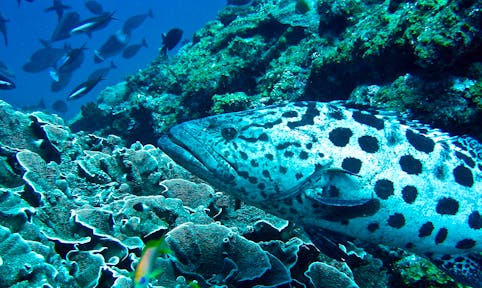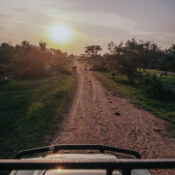Wildlife in Tanzania
Wildlife in Tanzania
A few gasps are heard, before silence spreads across the jeep. Breath held, you watch ahead nervously, un moving. The wildebeest miraculously evades the vice-like grip of a lion’s jaw, and frantically flees to the riverbank. Now, he faces the crocodile-infested waters of the Mara River.
Wildlife in Tanzania at a glance
A full one-third of Tanzania’s land mass is protected due to the creation of 16 national parks. This makes the country perfect for safaris and wildlife viewing.
Thanks to this vast amount of protected land, at least 20% of Africa’s large mammal population are spread across reserves, conservation areas, and marine parks in Tanzania.
Tanzania is famous for its biodiversity, its large populations of big cats, and the Great Migration.
Tanzania is also a popular destination for chimpanzee trekking, and is a hit with scuba diving enthusiasts who flock to Zanzibar to enjoy the blue crystalline waters and rich under sea life.
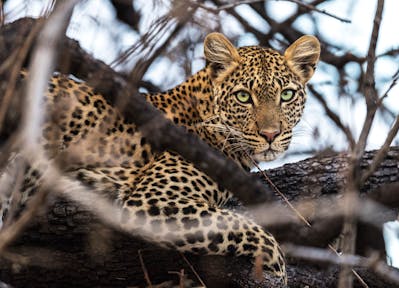
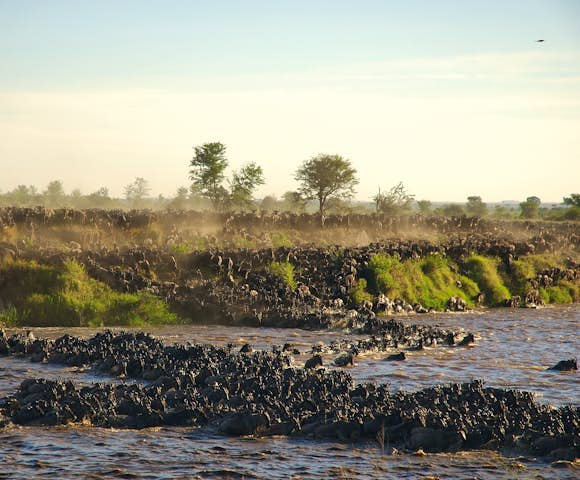
Race against the crocs, Serengeti National Park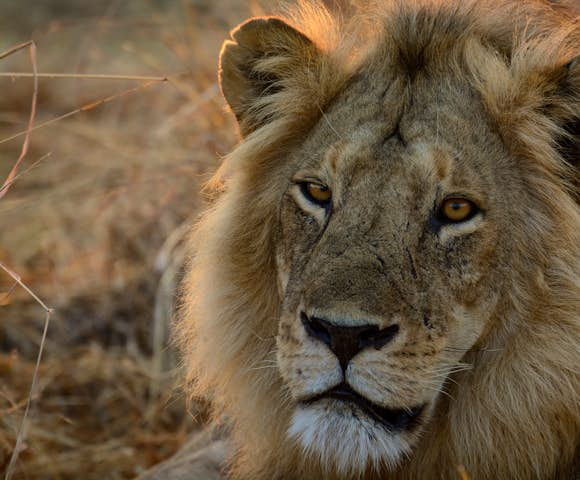
Basking in the evening sun, Ruaha National Park
Vice-like grip, Ruaha National Park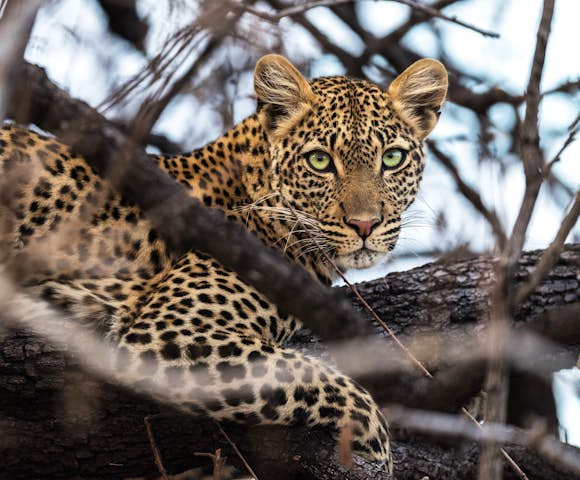
Emerald-greens, Ruaha National Park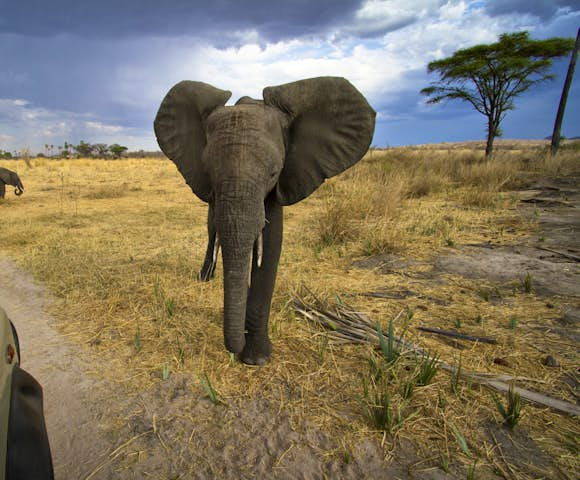
A close encounter, game drive at Ruaha.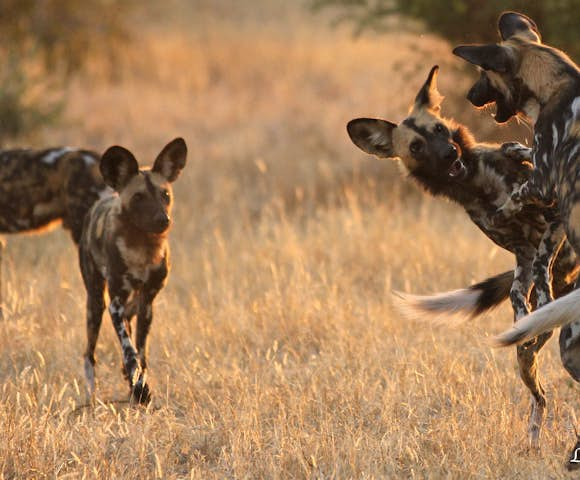
Fighting with friends, Ruaha National Park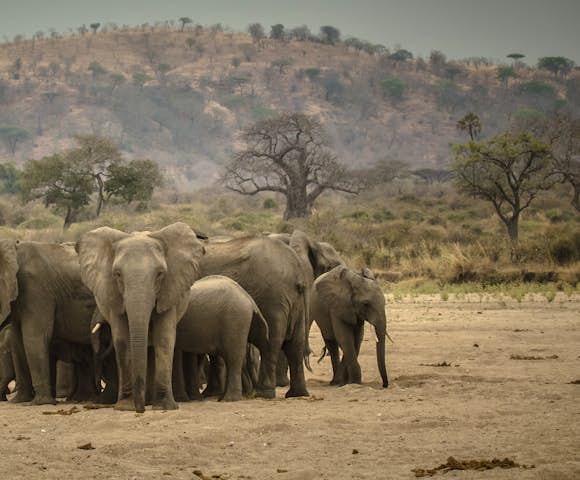
Staring us down, Ruaha National Park
Pit stop, Ruaha National Park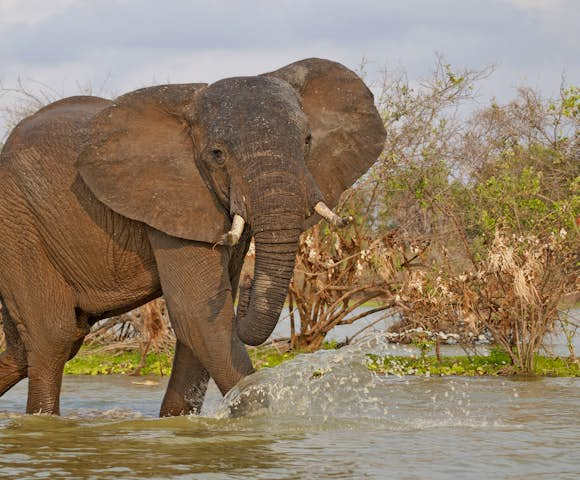
Just passing by, Selous Game Reserve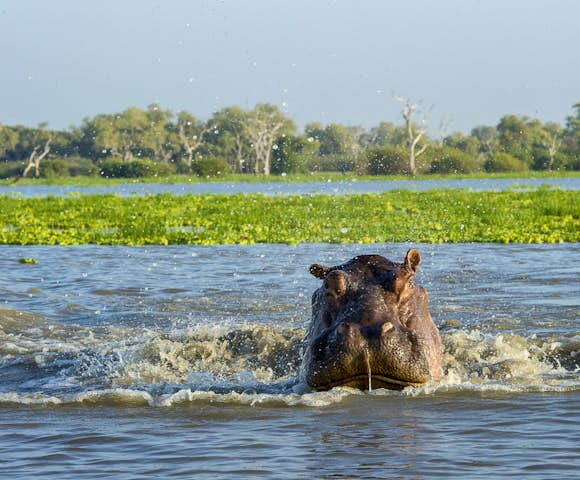
Splashing about, Selous Game Reserve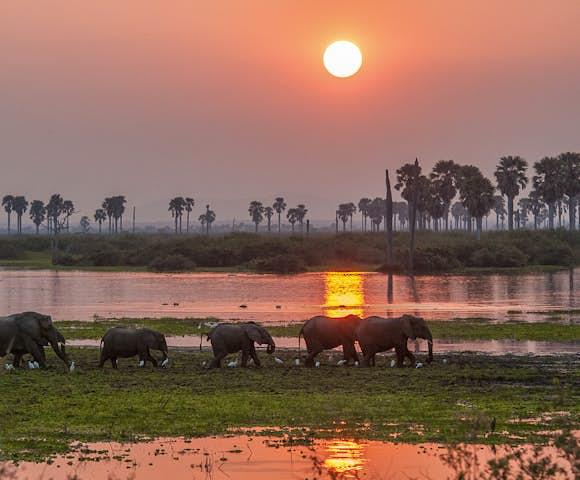
Elephants roaming the marshlands, Selous Game Reserve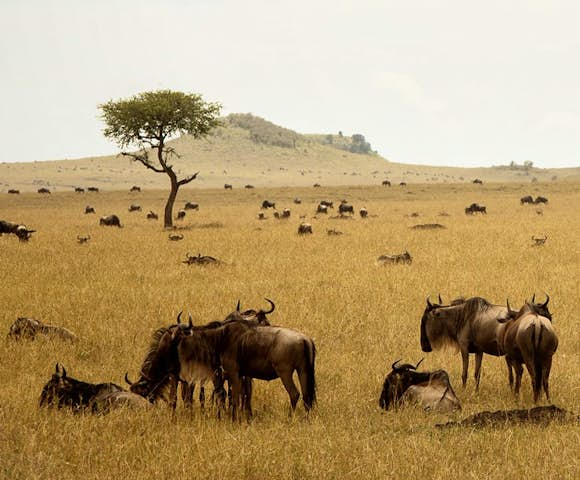
Wildebeest on the plains, Serengeti National Park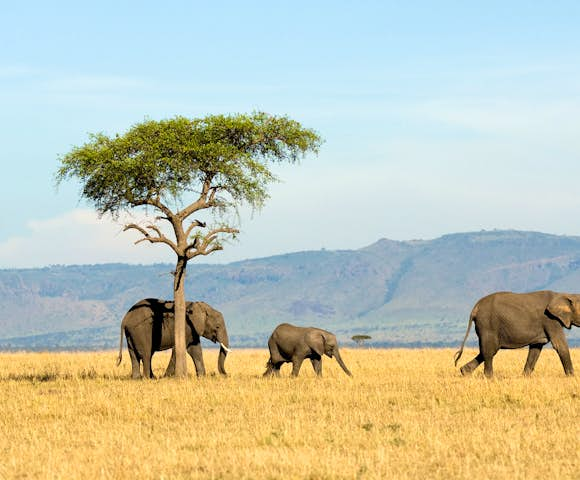
Elephants, acacias, savannah. Welcome to Tanzania.
Sunset silhouettes, Serengeti National Park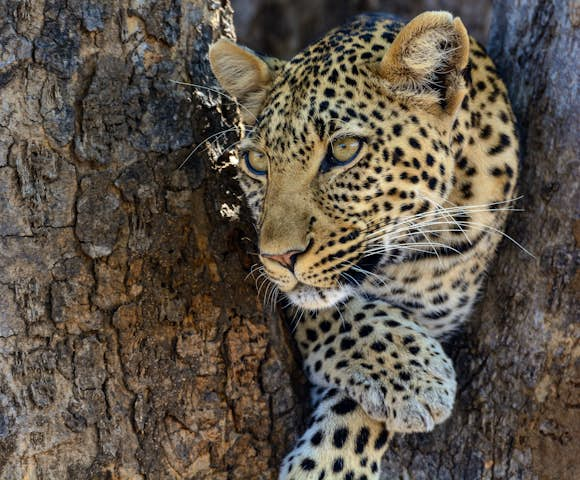
Laser-focused, Ruaha National Park
Race against the crocs, Serengeti National Park
Basking in the evening sun, Ruaha National Park
Wildlife in Tanzania
The Big Five
The Big Five: lions, leopards, elephants, buffalo, and rhino can all be spotted in Tanzania.
All five can be seen in the Serengeti and Ngorongoro Crater Conservation Area. The black rhino is the rarest of the five, but they do live in the Serengeti and Selous Game reserve, but they are easiest to see in the Ngorongoro Crater.
There are elephants and water buffalo in abundance in Tanzania, particularly in the Tarangire National Park, where herds of elephants outnumber people.
The lion is also rather common in Tanzania, with prides of up to 60 living in some areas of the Serengeti. The leopard is less common than the lion, but they can still be seen in Arusha National Park.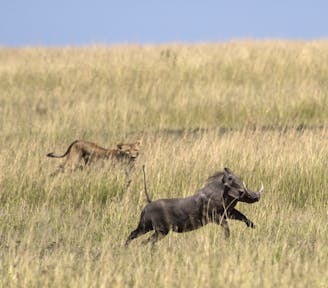
The chase is on, Maasai Mara
Big Cats & Predators
Aside from lions and leopards, other cats include the serval, caracal, and in Ngorongoro, the elusive golden cat.
Cheetahs live in most of the northern parks except Lake Manyara. For the best chance at seeing cheetahs, head to Ruaha National Park.
Other carnivores in Tanzania include several species of jackal, honey badger, rock hyrax, the rare bat-eared fox, spotted and striped hyena, and the remaining population of Africa’s wild dogs, which can be found in Ruaha National Park.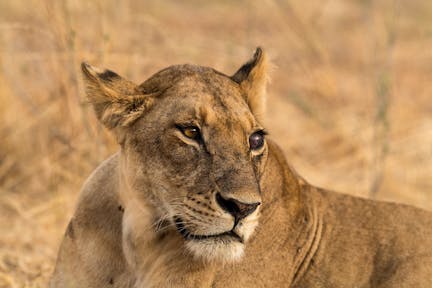
Ruaha is home to 10% of the world’s lion populations
Safari Game
On safari, expect to see roan antelope, sable, mongoose, impala, kudu, topis, kongonis, hartebeest (in Tarangire Park), eland, bushbuck, the spiral horned bovines, oryx, Kirk’s dik-dik, and giraffe.
Interestingly, the only place the giraffe cannot be found is in Ngorongoro Crater, it is thought that they cannot get up the steep sides. For the best game-watching action, head to the Serengeti or Tarangire National Park, where the vast and expansive plains allow you to see a number of herds grazing at once.
Tanzania is well-watered (relatively speaking) thanks to its monsoons. This means hippos and crocodiles can be found in most parks, but especially in Katavi National Park. Tanzania is also home to the waterbuck, sitatunga, and common warthog.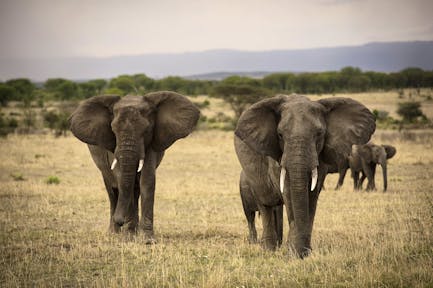
Embracing the ‘pole pole’ (‘slowly slowly’) lifestyle, Seregenti
The Great Migration
The Great Migration is one of the most extraordinary wildlife events in the world. It takes place in the Serengeti as herds upon herds of wildebeest, zebra, and Grant’s and Thomson’s gazelle traverse the savanna in pursuit of water and new grasslands.
In their wake follow predatory cheetah, lion, and leopard. Following the wet season, the wildebeest give birth to over 8,000 calves daily, resulting in half a million calves being born in a week.
Then, they begin their treacherous 2,000-mile journey across the Serengeti to the luscious fields in the Maasai Mara in Kenya. The entire Serengeti ecosystem depends on this migration, with the vast columns of wildebeest providing sustenance for the predators, felines, and birds of prey following them. 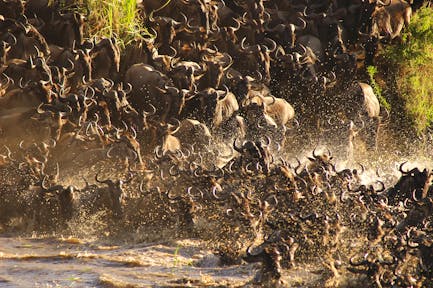
The Great Migration, a perilous journey.
Bird Life
There are over 1,000 species of bird in Tanzania, some of which are endemic to the country, including the Udzungwa forest partridge, Pemba green pigeon, the Usambara weaver, and the Udzungwa eagle owl.
Ostrich, avocets, bitterns, shags, herons, ibises, jacanas, kingfishers, plovers, sandpipers, snipes can all be found in Tanzania. There are numerous raptors too, such as babblers, bee-eaters, bulbuls, canaries, crows, francolins, falcons.
In Arusha National Park, you can find the colourful turaco and trogan. In Gombe National Park, there are over 200 species of bird, including the fish eagle and red-throated twinspot.
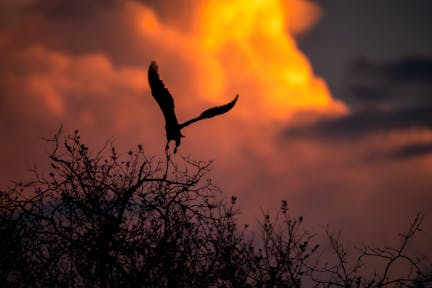
The Kitulo National Park is home to the Kipengere seedeater, the mountain marsh widow, the endangered blue swallow, Denham’s bustard, and the Njombe cisticola.
Lake Manyara is also a popular spot for bird watchers as there are over 400 species, including cormorants, storks, and pelicans. In Mikumi National Park, you have the chance to see the lilac-breasted roller, the yellow-throated strongclaw, and the bateleur eagle.
In Ruaha, where there are over 150 bird species, there are the yellow-collared lovebird and ashy starling. Flamingos also reside in some alkaline lakes in Tanzania, including in Arusha, Kilimanjaro, Lake Manyara.
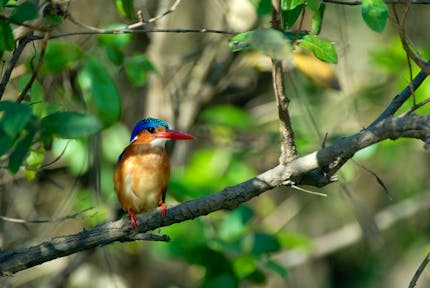
Primates
Head to Gombe National Park in the Mahale Mountains for the ultimate Jane Goodall experience (this is where she spent over fifty years furthering science’s understanding of human evolution).
In Gombe, you can trek up through the rainforest and sit and watch chimpanzees and their social activities for an hour. There are other primates here too, including the bush baby, patas, and vervet monkeys.
You can also take part in a chimpanzee habituation experience on Rubondo Island in Lake Victoria.
Other primates in the country include baboons and blue monkeys, which can be found in Gombe and the Mahale mountains. The colobus monkey can be found in the Serengeti by the Grumeti river.
There are some rare monkeys in Udzungwa Mountains National Park, including the Sanje mangabey and Udzangwa red colobus.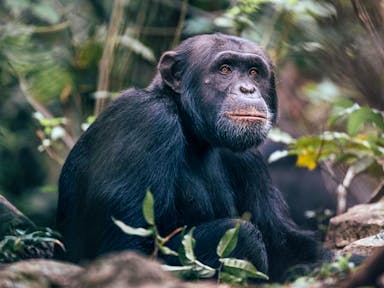
A chimp watching on in the lush forest
Marine Life
In the seas around Tanzania and the Zanzibar archipelago, you can see dolphins and whale sharks. If you are lucky, you may see humpback whales from Saadani National Park in Zanzibar.
Green turtles also breed at Saadani National Park and on Mnemba and Pemba Island. Zanzibar is one of the world’s most popular scuba diving destinations due to its diversity of life, clarity of water, and healthy coral reefs.
As well as marine life, Tanzania has a number of large lakes that are protected, allowing for populations of fish to thrive. Lake Tanganyika holds over 1,000 species of fish. Due to its age and isolation, the lake is a hotspot for biodiversity, and is most famous for its cichlids. Likewise, Rubando Island National Park is a protected breeding ground for tilapia and the Nile Perch.
Peeking out to say hello to passing snorkelers
Best time to visit for wildlife sightings
The long dry season in Tanzania runs from June to October. During these months, the grasses are short, which means the animals are easier to spot.
If you visit during the rainy season (November to May)
Visiting during the wet seasons (October to December, and March to May) means you’ll benefit from beautiful scenery and cheaper rates at accommodation, but wildlife sightings aren’t as good and activities can be cancelled last minute due to sudden, heavy rains. TANZANIA MONTH BY Month Home of the African Elephant, Amboseli National Park
All Categories
Recent Posts
Birding Sports in Uganda.
Kidepo Valley National Park
Chimpanzee Habituation in Uganda
Tags
Quick booking process
+256 393254072

